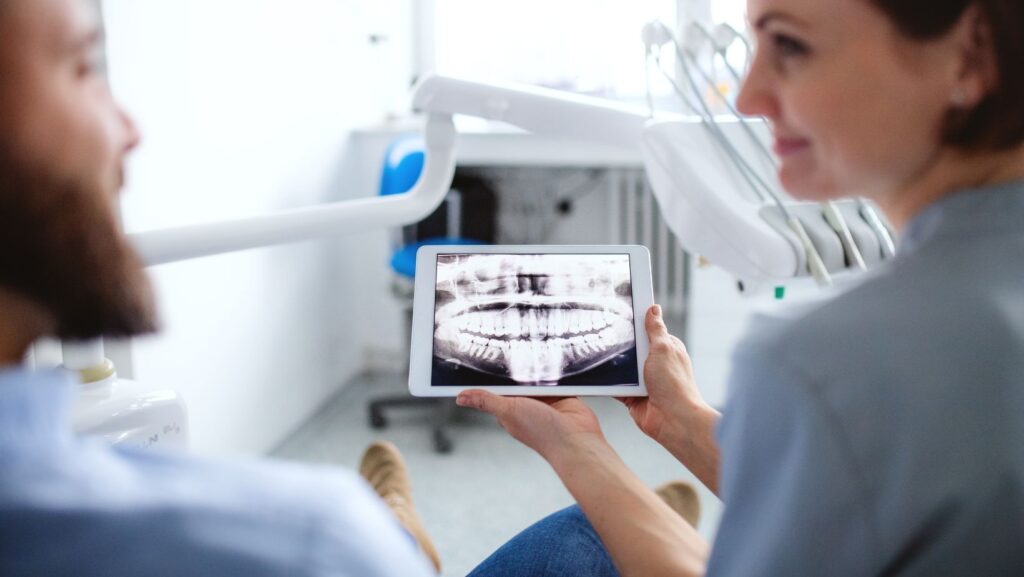
What are Three Advantages of Digital X-rays Over Film X-rays
Digital X-ray technology has revolutionized the field of medical imaging. It provides numerous advantages over traditional film-based X-rays, which have been used for decades. In this article, we will explore three key advantages of digital X-rays over film X-rays, including improved image quality, faster results and easier storage, and lower radiation exposure.
What are Three Advantages of Digital X-rays Over Film X-rays? One of the most significant advantages of digital X-rays is their superior image quality. Digital X-ray systems capture images using electronic sensors, which provide much greater clarity and detail compared to traditional film X-rays. Here’s how: Digital X-rays can produce images with higher resolution, allowing radiologists to detect even the smallest abnormalities. The electronic sensors used in digital systems are much more sensitive to variations in light and can record finer details than film-based X-ray systems. This higher resolution is particularly helpful when examining subtle conditions such as fractures, early-stage tumors, or infections that may not be visible on a standard film X-ray.
Unlike film X-rays, which have fixed exposure settings, digital X-rays allow for easy adjustment of contrast and brightness after the image has been taken. This means that radiologists can enhance the visibility of different tissues, structures, and abnormalities in real-time. For example, if a bone fracture or a soft tissue injury is difficult to see, the image can be manipulated digitally to improve clarity and detail, reducing the need for retakes. Film-based X-rays degrade over time, especially if they are not stored properly. Exposure to light, heat, or humidity can result in fading or damage to film images. Digital X-rays, on the other hand, do not degrade with age and can be stored indefinitely without losing quality. This means that a digital image taken today can be referenced and analyzed years later with no loss in clarity or detail.

Faster Results and Easier Storage
What are Three Advantages of Digital X-rays Over Film X-rays? Another significant advantage of digital X-rays is that they provide quicker results and are far easier to store and manage than traditional film X-rays. With digital X-rays, the results are available almost immediately after the image is taken. The image is captured electronically and displayed on a computer screen within seconds, making it easy for radiologists and medical professionals to analyze the results without delay. This speed reduces patient waiting times and allows for faster diagnoses, which can be critical in emergency situations where time is of the essence.
In contrast, with film X-rays, images must be developed in a darkroom, a process that can take anywhere from 10 to 30 minutes or more. This delay can be frustrating for both patients and healthcare providers, especially in busy or urgent care environments.
Storing digital X-rays is far more efficient than storing film-based images. Digital images can be saved to hard drives, cloud storage, or picture archiving and communication systems (PACS), which are secure and easily accessible. This makes it simple to store a large number of images in a relatively small space. In comparison, physical film X-rays require significant storage space and must be handled with care to avoid damage.

Lower Radiation Exposure
Digital sensors are far more sensitive to radiation than the film used in traditional X-ray systems. This means that digital X-rays can capture high-quality images with less radiation exposure. In fact, digital X-ray technology can reduce the amount of radiation needed by as much as 50-90% compared to conventional film X-rays. This is especially beneficial for pediatric patients, pregnant women, and individuals requiring frequent imaging, as it minimizes their exposure to harmful radiation.
With digital X-rays, the amount of radiation can be fine-tuned based on the area being imaged and the patient’s size and condition. This level of control helps minimize radiation exposure while still producing high-quality images. In contrast, film X-ray systems require a fixed amount of radiation to expose the film, regardless of the patient’s specific needs. Healthcare workers, including radiologists and technicians, are also exposed to X-rays during the imaging process. Digital X-ray systems not only reduce the radiation exposure for patients but also for medical staff. This is especially important for radiology departments that perform a high volume of imaging tests, as it helps reduce the cumulative radiation dose to healthcare professionals over time.
Digital X-ray technology offers several advantages over traditional film X-rays that enhance patient care, improve diagnostic accuracy, and increase efficiency in medical settings. The improved image quality, faster results and easier storage, and lower radiation exposure make digital X-rays a superior choice for modern healthcare. As digital imaging continues to advance, it is likely that digital X-rays will become the standard in radiology departments worldwide, offering even more benefits for both patients and healthcare professionals.

